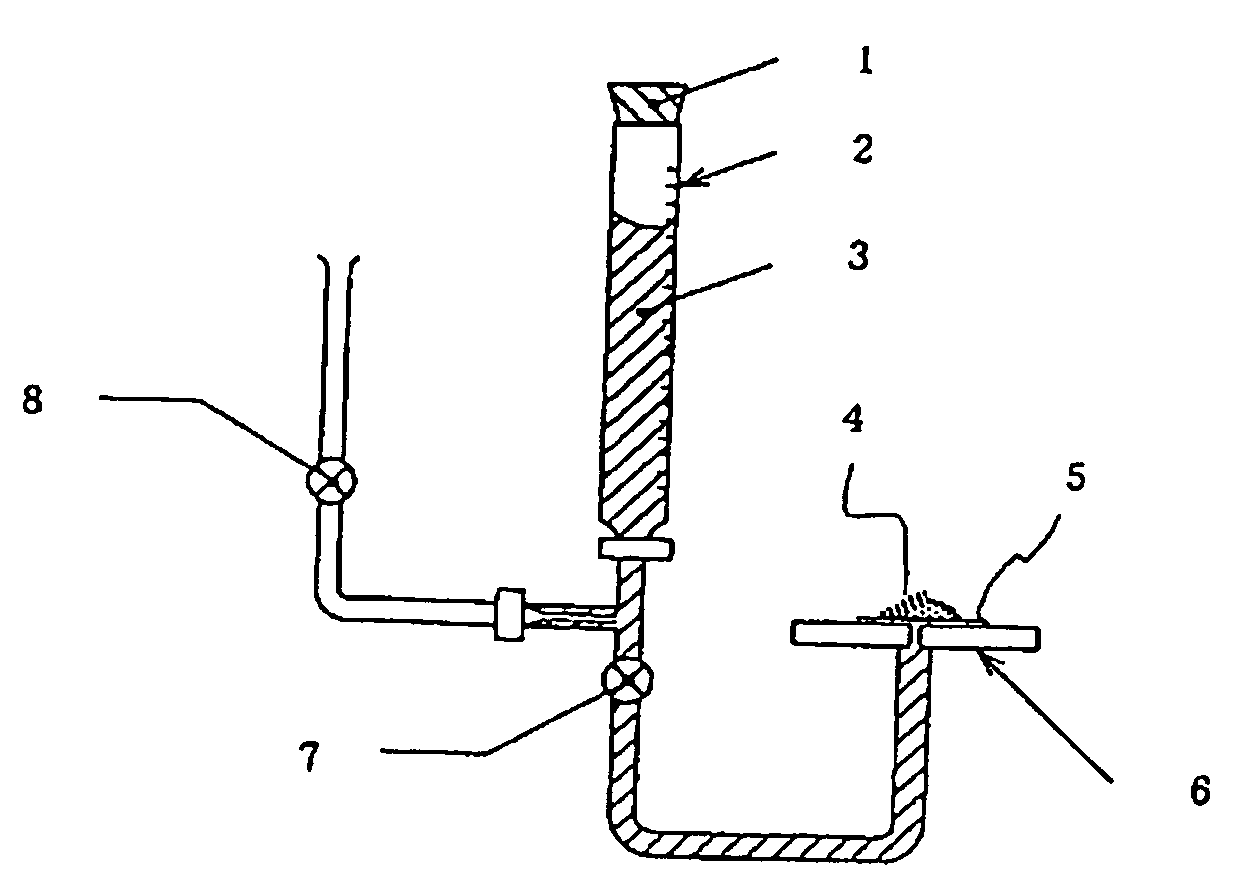Medical Adhesive
adhesives, which is applied in the direction of surgical adhesives, anti-corrosion paints, dental adhesives, etc., can solve the problems of not obtaining a practical curing rate at the temperature in the vicinity of the body temperature, deterioration and decomposition, and the use of aromatic polyisocyanate as a raw material for medical adhesives has a problem, and achieves excellent adhesive strength for a long time. , the safety of the medical adhesives a medical adhesives and adhesives, adhesives and adhesives and medical adhesives and adhesives and adhesives and medical adhesives and adhesives and adhesives and medical adhesives and adhesives and adhesives and medical adhesives and adhesives adhesives and medical adhesives and adhesives and medical adhesives are adhesives and other problems, the safety and the a medical adhesives and adhesives, a technology of medical adhesives, applied in the field of medical adhesives, a technology of aromatic polyisocyanate and adhesives,
- Summary
- Abstract
- Description
- Claims
- Application Information
AI Technical Summary
Benefits of technology
Problems solved by technology
Method used
Image
Examples
production example 1
[0171] After 15.5 parts of ethylene glycol and 3.8 parts of potassium hydroxide were fed into an autoclave and substituted with nitrogen (the oxygen concentration in the vapor phase was 450 ppm), the inside of the autoclave was vacuum dehydrated at 120° C. for 60 minutes.
[0172] Then, after the mixture of 784.5 parts of ethylene oxide and 200 parts of propylene oxide was fed at temperatures of 100 to 130° C. for about 10 hours, the reaction was continued at 130° C. for 3 hours, and liquid crude polyether in which the content of oxyethylene groups was 80% was obtained.
[0173] One thousand parts of this liquid crude polyester was put in an autoclave followed by substitution with nitrogen (the oxygen concentration in the vapor phase was 450 ppm), and then 30 parts of ion-exchanged water was added. After that, 10 parts of synthetic magnesium silicate (sodium content of 0.2%) was added followed by substitution with nitrogen again, and then the mixture was stirred with the stirring speed ...
production example 2
[0174] After 15.5 parts of ethylene glycol and 3.8 parts of potassium hydroxide were fed into an autoclave followed by substitution with nitrogen (the oxygen concentration in the vapor phase was 450 ppm), the inside of the autoclave was vacuum dehydrated at 120° C. for 60 minutes.
[0175] Then, after the mixture of 209 parts of ethylene oxide and 116 parts of propylene oxide was fed at temperatures of 100 to 130° C. for about 10 hours, the reaction was continued at 130° C. for 3 hours, and liquid crude polyether in which the content of oxyethylene groups was about 60% was obtained.
[0176] This liquid crude polyether was treated with the synthetic magnesium silicate in the same method as that of the above-mentioned Production Example 1 and a random co-adduct of ethylene oxide / propylene oxide (b2) was obtained. As for this (b2), the number average molecular weight was 1,400, the content of oxyethylene groups was 60%, and the content of alkaline metals and / or alkaline earth metals was 0...
production example 3
[0177] After 362 parts of propylene glycol and 3.8 parts of potassium hydroxide were fed into an autoclave followed by substitution with nitrogen (the oxygen concentration in the vapor phase was 450 ppm), the inside of the autoclave was vacuum dehydrated at 120° C. for 60 minutes.
[0178] Then, after 632 parts of propylene oxide was fed at temperatures of 100 to 130° C. for about 10 hours, the reaction was continued at 130° C. until the content of volatile matters became 0.1% or less in order to obtain a liquid crude polyether.
[0179] This liquid crude polyether was treated with the synthetic magnesium silicate in the same method as that of the above-mentioned Production Example 1 and an adduct of propylene oxide (b3) was obtained. As for this (b3), the number average molecular weight was 210, the content of oxyethylene groups was 0%, and the content of alkaline metals and / or alkaline earth metals was 0.04 mmol / kg.
PUM
| Property | Measurement | Unit |
|---|---|---|
| temperatures | aaaaa | aaaaa |
| humidity | aaaaa | aaaaa |
| diameter | aaaaa | aaaaa |
Abstract
Description
Claims
Application Information
 Login to View More
Login to View More - R&D
- Intellectual Property
- Life Sciences
- Materials
- Tech Scout
- Unparalleled Data Quality
- Higher Quality Content
- 60% Fewer Hallucinations
Browse by: Latest US Patents, China's latest patents, Technical Efficacy Thesaurus, Application Domain, Technology Topic, Popular Technical Reports.
© 2025 PatSnap. All rights reserved.Legal|Privacy policy|Modern Slavery Act Transparency Statement|Sitemap|About US| Contact US: help@patsnap.com


